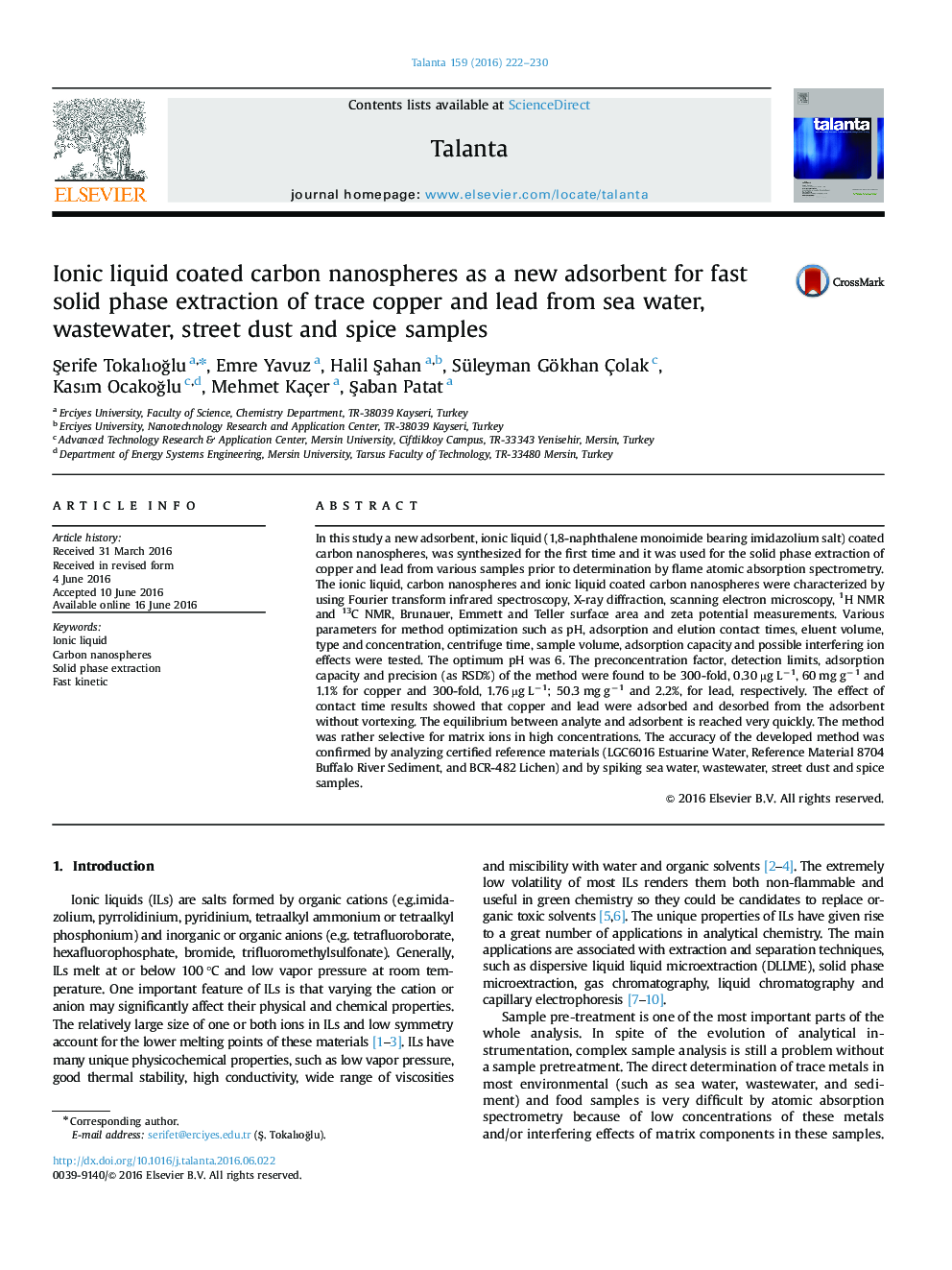| کد مقاله | کد نشریه | سال انتشار | مقاله انگلیسی | نسخه تمام متن |
|---|---|---|---|---|
| 1241769 | 1495777 | 2016 | 9 صفحه PDF | دانلود رایگان |
• Ionic liquid coated carbon nanospheres as a new adsorbent were synthesized.
• The characterization by FT-IR, XRD, 1H NMR, 13C NMR, BET and zeta potential.
• The most important advantage of the adsorbent is to reach equilibrium very fast.
• High adsorption capacity (60 and 50.3 mg g−1) and high preconcentration factor (300).
• Determination of copper and lead in sea water, wastewater, street dust and spices.
In this study a new adsorbent, ionic liquid (1,8-naphthalene monoimide bearing imidazolium salt) coated carbon nanospheres, was synthesized for the first time and it was used for the solid phase extraction of copper and lead from various samples prior to determination by flame atomic absorption spectrometry. The ionic liquid, carbon nanospheres and ionic liquid coated carbon nanospheres were characterized by using Fourier transform infrared spectroscopy, X-ray diffraction, scanning electron microscopy, 1H NMR and 13C NMR, Brunauer, Emmett and Teller surface area and zeta potential measurements. Various parameters for method optimization such as pH, adsorption and elution contact times, eluent volume, type and concentration, centrifuge time, sample volume, adsorption capacity and possible interfering ion effects were tested. The optimum pH was 6. The preconcentration factor, detection limits, adsorption capacity and precision (as RSD%) of the method were found to be 300-fold, 0.30 µg L−1, 60 mg g−1 and 1.1% for copper and 300-fold, 1.76 µg L−1; 50.3 mg g−1 and 2.2%, for lead, respectively. The effect of contact time results showed that copper and lead were adsorbed and desorbed from the adsorbent without vortexing. The equilibrium between analyte and adsorbent is reached very quickly. The method was rather selective for matrix ions in high concentrations. The accuracy of the developed method was confirmed by analyzing certified reference materials (LGC6016 Estuarine Water, Reference Material 8704 Buffalo River Sediment, and BCR-482 Lichen) and by spiking sea water, wastewater, street dust and spice samples.
Figure optionsDownload as PowerPoint slide
Journal: Talanta - Volume 159, 1 October 2016, Pages 222–230
